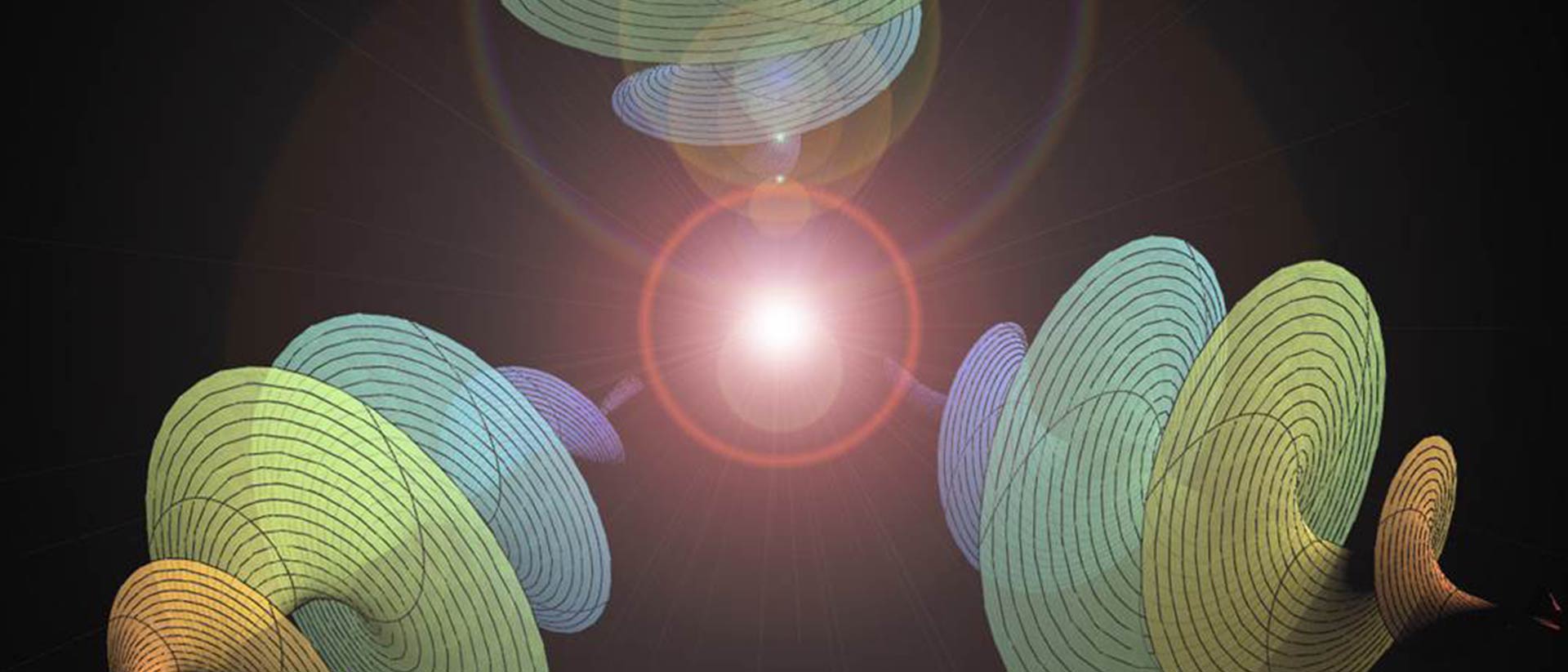Now in 3D: “Spooky Action at a Distance”

“Spooky action at a distance” is what Albert Einstein suspected was behind the quantum mechanical phenomenon of entanglement, in which the states of two light quanta or photons remain mysteriously correlated with each other even when they are separated by an arbitrarily large distance. A measurement of the state of one member of the pair instantaneously determines the state of the other, even if the two are light-years apart.
Nevertheless physicists can actually generate and study entangled states in the laboratory. Up to now, however, multiparticle entanglement had only been realized experimentally in two dimensions. However, Professor Anton Zeilinger and a team of physicists based at the Austrian Academy of Sciences’ Institute for Quantum Optics and Quantum Information (IQOQI), University of Vienna and the Universitat Autònoma de Barcelona have now succeeded in demonstrating experimentally the multidimensional entanglement of three photons. To get an idea of what quantum entanglement involves, consider a number of ice-skaters, spinning au point.
Two entangled ice-skaters will always rotate in the same sense, but there is no way to tell a priori whether they are rotating in a clockwise or anticlockwise sense. However, as soon as an observation determines the direction of rotation of one of them, it is clear that the entangled partner must also be rotating in that direction, even if one is pirouetting on a frozen lake in North America and the other is twirling around on an urban ice-rink in Europe. “One can think of the entangled photons in our experiment as three entangled quantum ice-skaters, who are performing – in perfect synchrony – a precisely choreographed quantum ballet,” explains Mehul Malik, first author of the study which appeared in Nature Photonics. “Moreover, these entangled quantum skaters not only perform their pirouettes synchronously, they also execute every other choreographed movement in unison.” Physicists had already theoretically predicted the existence of this type of “asymmetric” entanglement. “We have now shown, for the first time, how one can generate these types of entanglement in the laboratory,” Malik explains.
In the experiments, the researchers made use of two crystals of a special material (periodically poled Pottasium Titanyl Phosphate), each of which absorbs blue light and emits red light. With a small probability, each crystal emits two entangled red photons for one absorbed blue photon. The team then went on to entangle the two entangled pairs with each other by erasing all information that would permit identification of their original sources. One photon from this quartet of photons was then measured to herald the presence of an asymmetrically entangled state of the other three photons.
Photons are employed as information carriers both for data processing and data storage. As a rule, each photon can encode only a single bit. A photon that is entangled with others, however, can transmit more than a single bit of information. And in the future it may well be possible to employ three-dimensionally entangled particles in quantum computers and quantum cryptography, i.e. the encryption of information with the help of quantum particles.
“Our experiment shows that it is possible to implement a future quantum internet for communications between more than two parties, in which each can communicate more than one bit of information per photon,” adds Anton Zeilinger. In other words, this method would enable several parties to securely exchange information with each other on different levels at once.













